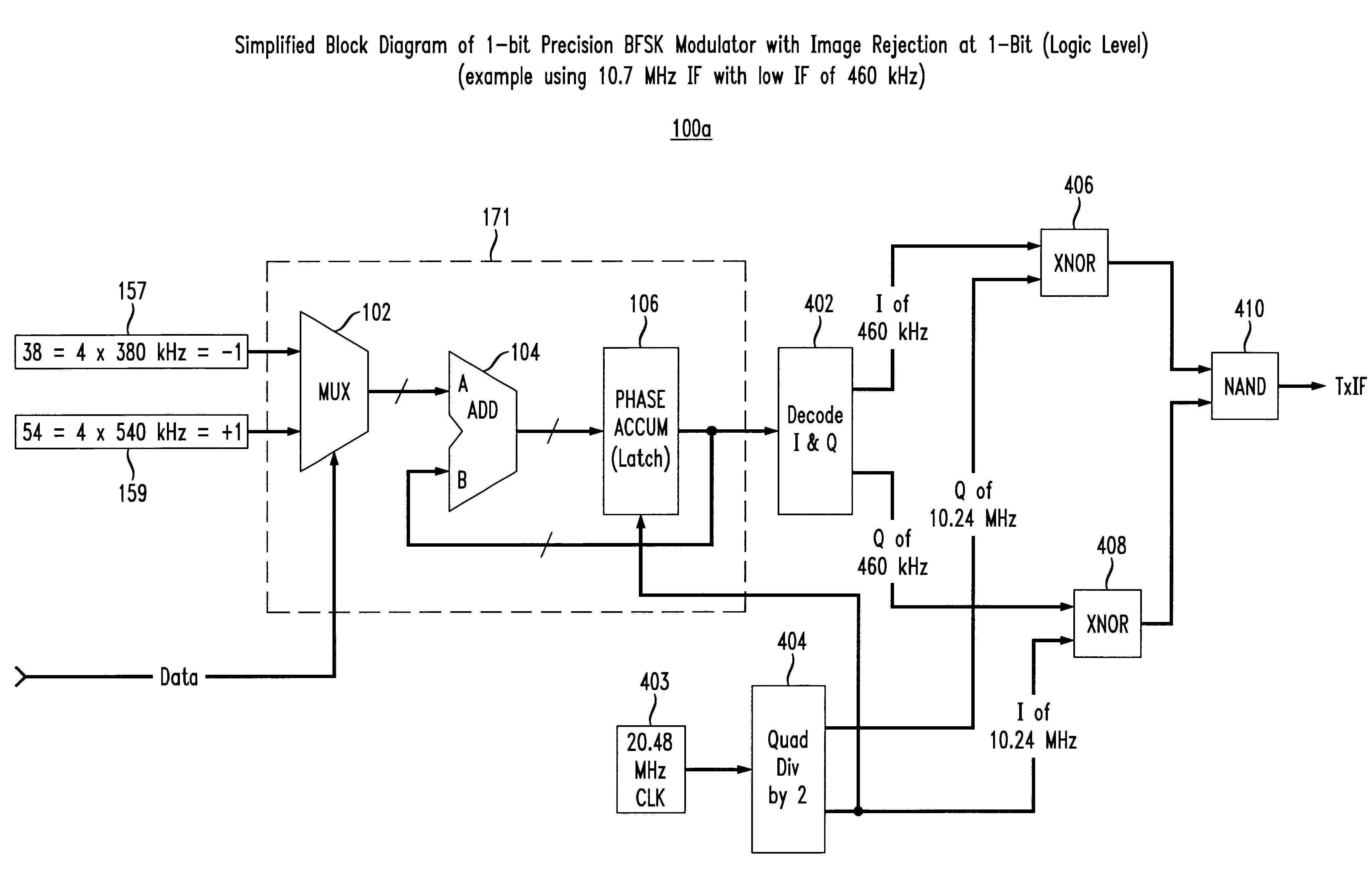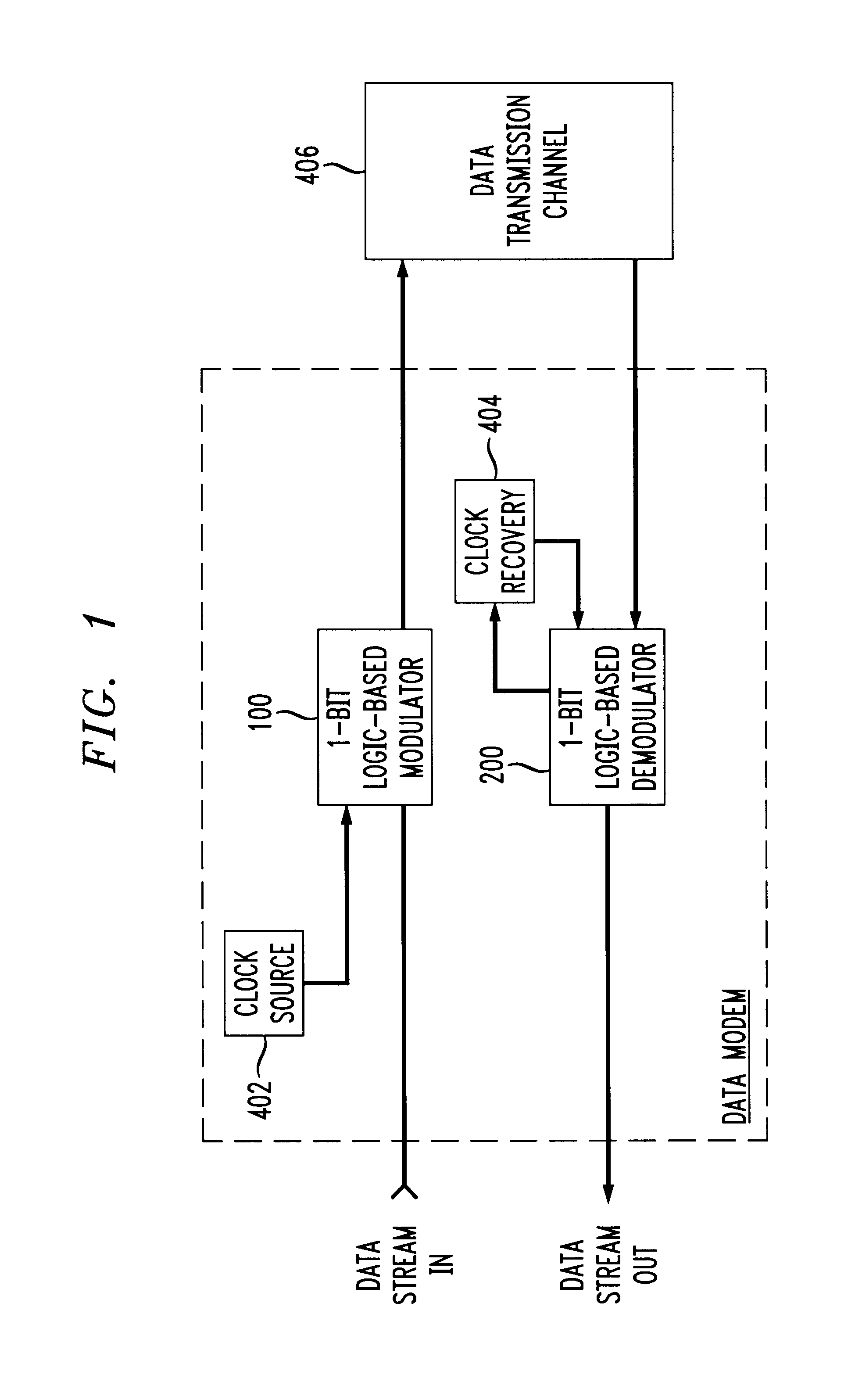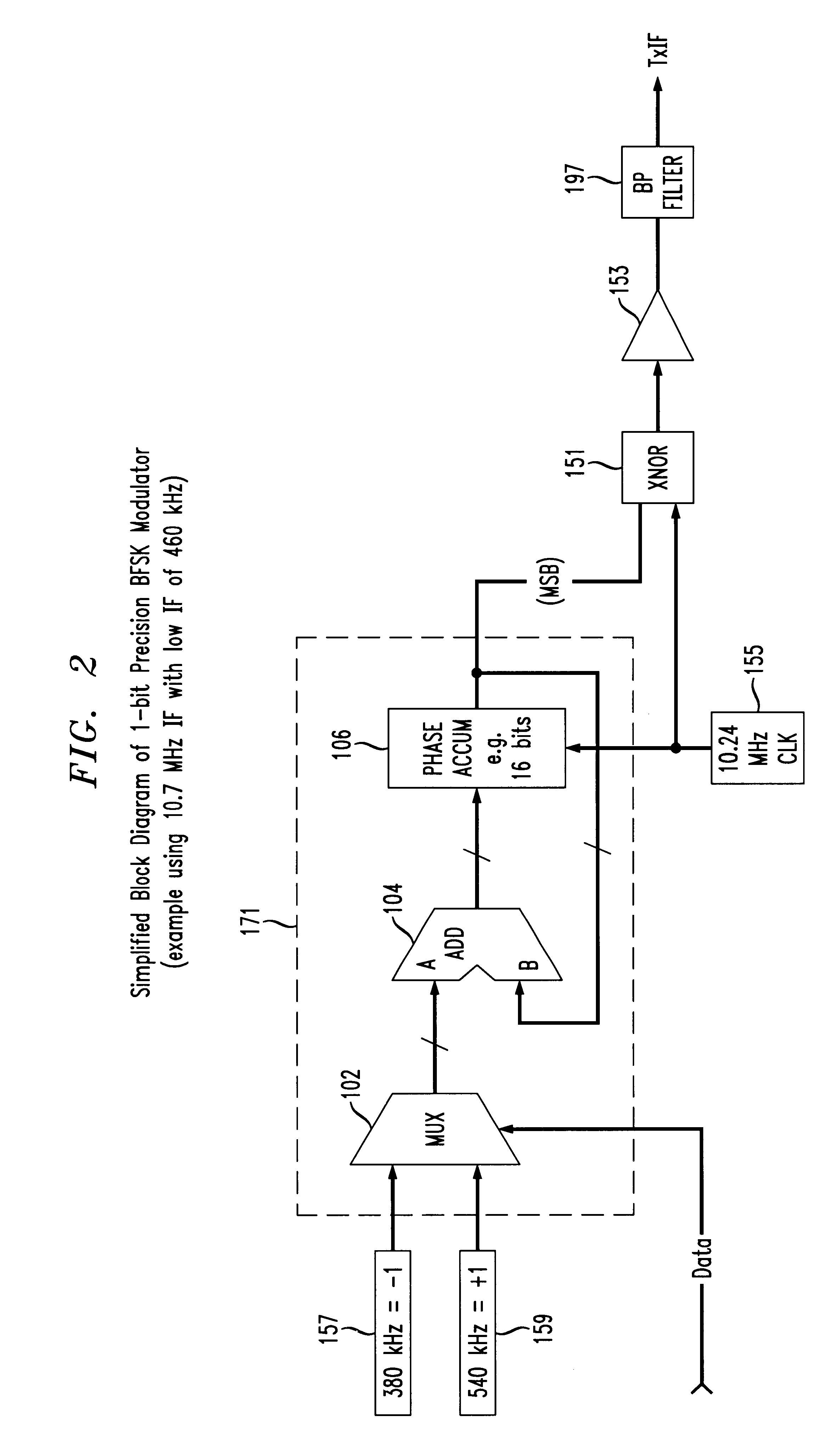Image rejection in logic-based architecture for FSK modulation and demodulation
a logic-based architecture and fsk technology, applied in modulation, pulse technique, digital transmission, etc., can solve the problems of ncpm techniques, large integrated circuit area and power consumption, and relatively expensive and complicated manufacturing
- Summary
- Abstract
- Description
- Claims
- Application Information
AI Technical Summary
Problems solved by technology
Method used
Image
Examples
Embodiment Construction
Architectures and techniques for a continuous phase frequency shift keying (FSK) device are provided which operate at one (1)-bit resolution (i.e., Binary Frequency Shift Keying (BFSK)) to enable high-performance implementations with minimal chip area, power consumption, and cost. While prior implementations of FSK modems (e.g., voltage controlled oscillator (VCO) based modems) provided noncontinuous phase output signals, the present invention implements a continuous phase FSK technique. Moreover, using the present continuous phase techniques, an amount of frequency shift (modulation index, deviation) from device to device will be consistent, as opposed to variations seen in conventional FSK devices using, e.g., VCOs.
While shown in the specific implementations of binary FSK (BFSK), the principles of the present invention regarding both the modulator and demodulator techniques relate equally to M-ary FSK implementations.
The disclosed architecture and techniques provide the ability to...
PUM
 Login to View More
Login to View More Abstract
Description
Claims
Application Information
 Login to View More
Login to View More - R&D
- Intellectual Property
- Life Sciences
- Materials
- Tech Scout
- Unparalleled Data Quality
- Higher Quality Content
- 60% Fewer Hallucinations
Browse by: Latest US Patents, China's latest patents, Technical Efficacy Thesaurus, Application Domain, Technology Topic, Popular Technical Reports.
© 2025 PatSnap. All rights reserved.Legal|Privacy policy|Modern Slavery Act Transparency Statement|Sitemap|About US| Contact US: help@patsnap.com



